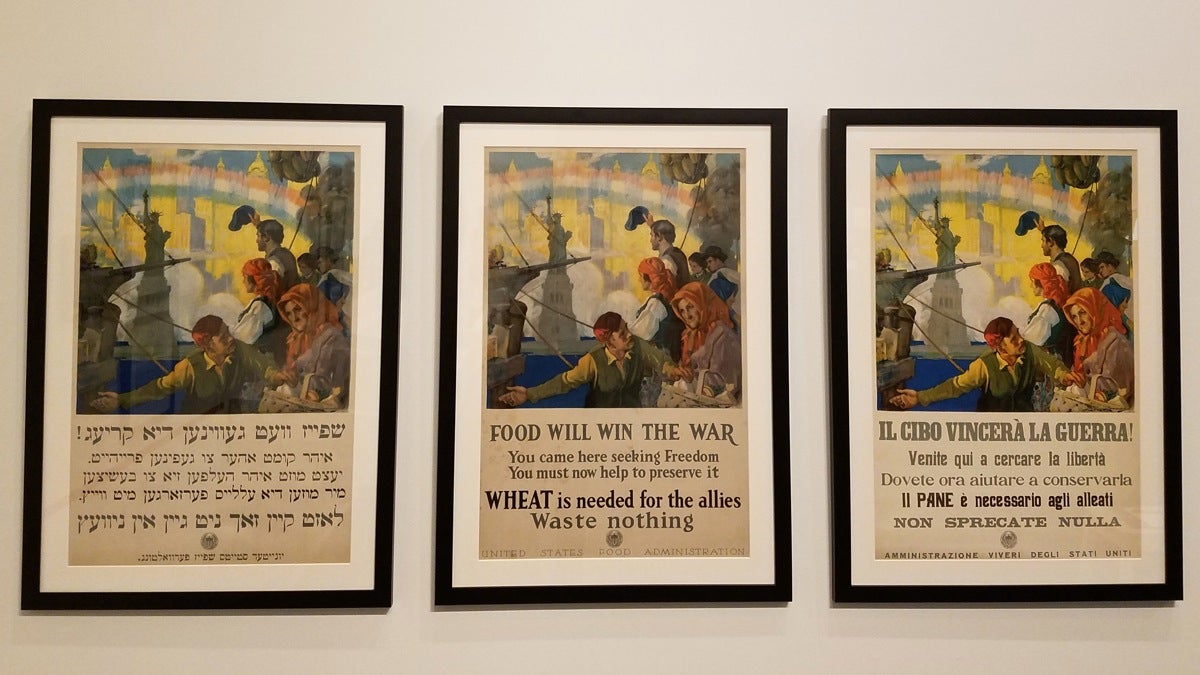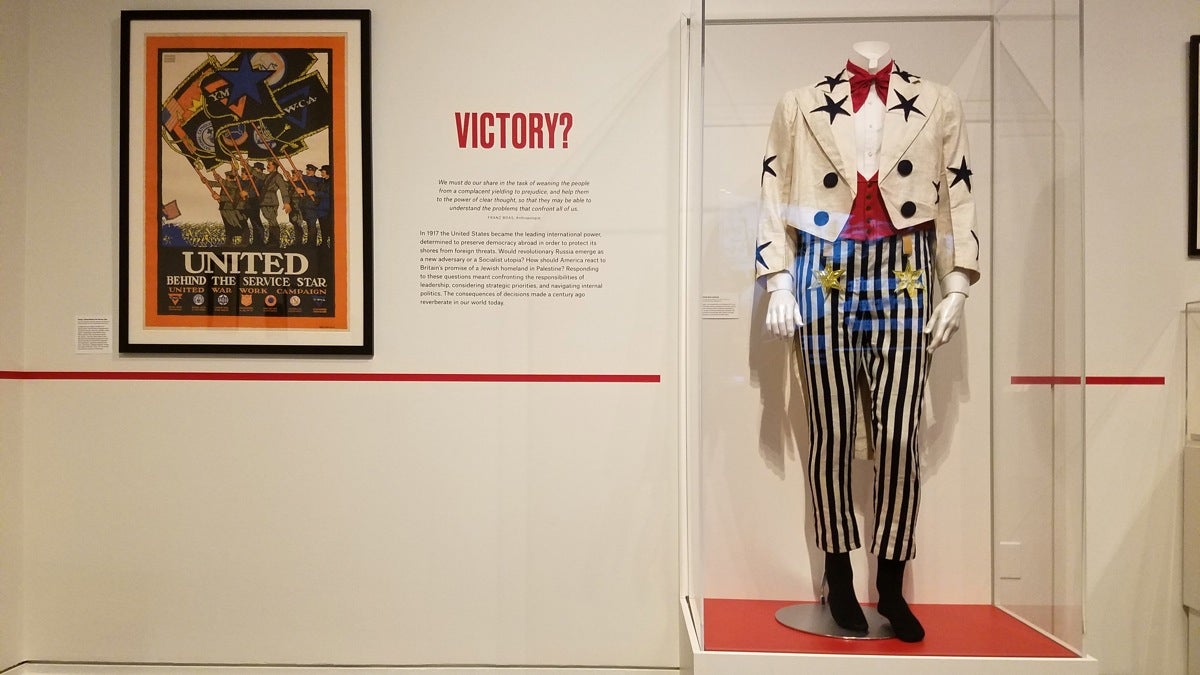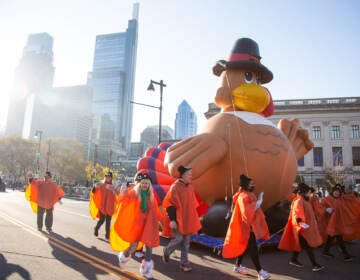National Museum of American Jewish History exhibit links 1917 to today’s debate on immigration
Listen
(Peter Crimmins/WHYY)
The debates America is having right now about President Trump’s proposed immigration ban can be traced back at least 100 years, according to a new exhibition at the National Museum of American Jewish History.
1917 was a harbinger year: the United States entered World War I, the Bolshevik Revolution promised a Communist utopia in Russia, and Britain put its weight behind a Jewish homeland in Palestine.
“Three pivotal events in world history that took place in a single year, all of which seem to point to hope — to a world transitioning into a new era,” said Joshua Perelman, curator at Philadelphia’s National Museum of American Jewish History who co-curated “1917: The Year That Changed Everything.”
“But the year ends with all these issues quite unresolved,” he added.
It was a year that sparked a backlash against Jews and immigrants in America and around the world, that continues to this day.
 “1917: The Year That Changed Everything” at the National Museum of American Jewish History traces the hope and failure of global tranquility in the 20th century.
“1917: The Year That Changed Everything” at the National Museum of American Jewish History traces the hope and failure of global tranquility in the 20th century.
In 1917, a disproportionate number of Jewish immigrant enlisted in the American military to fight for their new country, only to find a rise in anti-Semitic nationalism after the war.
In Russia, the Bolshevik Revolution launched the Communist experiment in a country with the largest Jewish population in the world. Many Jews in America — with strong ties to friends and family in Eastern Europe and Russia — rejoiced.
“People were celebrating in the streets,” said Rachel Lithgow, co-curator of the exhibition and executive director of the American Jewish Historical Society in New York.
“Depending on what numbers you look at, between 10,000 and 20,000 people went to Madison Square Garden to celebrate the revolution. A lot of them went back [to Russia] to experience utopia, and maybe for a few years they did,” she said. “But then Stalin’s purges showed them they had made a grave error.”
The Balfour Declaration of 1917, a British document supporting a Zionist state in Palestine, was crafted to develop support among American Jews to keep America in the war, fighting with the Allies. While it initially created hope for a Jewish homeland, it created a knot of controversy that is still tightly bound a century later.
“1917: How One Year Changed The World” is an exhibition of rare documents, photographs, and artifacts, including original draft copies of the Balfour Declaration, the original translation of the encoded Zimmerman telegram from Germany to Mexico (intercepted by the British and handed to the U.S.) that drew America into World War One.
It also tells the stories of less-known individuals, like Boris Reinstein, a Russian immigrant in Buffalo, N.Y., who applied for an American passport in 1917, only to renounce his American citizenship in 1923 in favor of the nascent Soviet Socialist Republic.
It also tells the story of Emma Goldman, an American anarchist who was initially an advocate of socialism, but later pulled away her endorsement as she watched how the Communist government conducted itself. She was arrested many times for sedition, and for distributing an early form of birth control: a metal cervical cap.
In an exhibition comprised mainly of historic documents and old photographs, the little metal cap — about an inch and a half in diameter, like an oversized thimble — is an object that evokes the most visceral reaction. You wince as soon as you realize how it’s used.
In 1917 Goldman was imprisoned for inciting people not to register for the draft. After two years in prison she was deported for, essentially, being a rabble-rouser. The exhibition features a letter directly from J. Edgar Hoover recommending her removal from America.
“That is a profound and important moment in American history,” said Perelman. “Today, what would it be like if people were arrested and deported for speaking out against anything? What if you could be arrested and deported for speaking out about health care?”
The hope generated by the global events of 1917 were cut short six years later by the Johnson-Reed Act, establishing quotas sharply limiting the number of immigrants allowed in America.
“What history showed by the Johnson-Reed Act is that people die when we shut our borders,” said Lithgow. “There’s an absolute direct correlation when the United States decides who and who isn’t American, and who and who can’t become American.”
Lithgow said the exhibition, three years in the making, has been directly influenced by the recent travel bans proposed by the Trump administration. In the last few months the curators honed this exhibition to show that debates about nationalism in 1917 that are happening again now.
“A hundred years is a blink of an eye,” said Lithgow.
WHYY is your source for fact-based, in-depth journalism and information. As a nonprofit organization, we rely on financial support from readers like you. Please give today.





